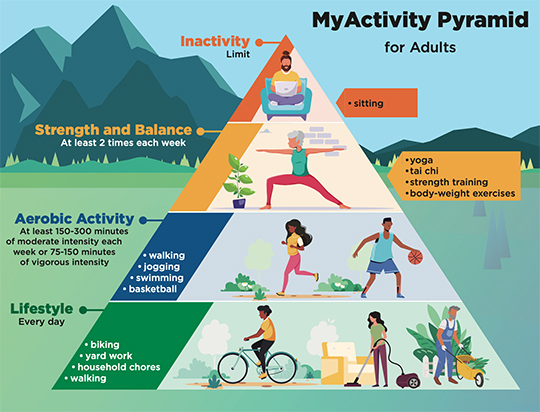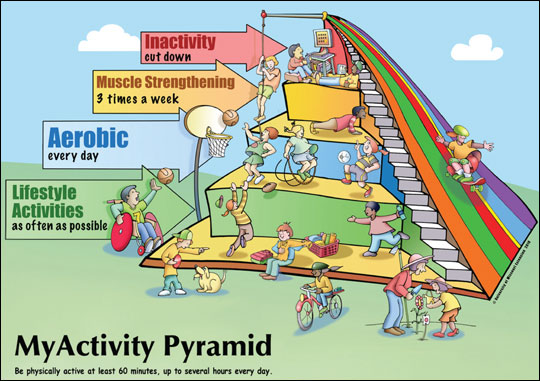Working in the office is usually quiet, with long periods of sitting or leaning. After returning home, we often lie down on the sofa or play games on the computer, which is indeed comfortable.
Scientists refer to this lifestyle as a sedentary lifestyle, which mainly refers to activities such as work, study, and entertainment performed in a sitting, leaning, or lying position, excluding sleeping.

The progress of society and the development of technology have greatly changed people’s physical activities, with an increasing amount of time spent on static behaviors such as working, driving, and sitting.
Consequence of Not Exercising
Not exercising not only leads to excess fat around the waist and a prominent double chin, but scientists point out that the cost is not only limited to that. In 2012, scientists published an article in the American journal “Medicine and Science in Sports and Exercise,” stating that a reduction in physical activity directly affects the body’s ability to control blood sugar levels.
The scientists recruited a group of young people who love exercising and equipped them with instruments and pedometers to monitor their blood sugar levels, while also keeping detailed records of their daily diets.

In the first stage of the experiment, the volunteers were asked to exercise according to their usual habits. On average, each person could achieve about 30 minutes of exercise per day, easily reaching a goal of over 10,000 steps (according to the exercise guidelines of the American Heart Association, it is recommended to take over 10,000 steps per day). The blood sugar monitoring showed that their blood sugar levels remained within the normal range.

In the second stage of the experiment, the volunteers were asked to walk less than 5,000 steps per day. They had to substitute walking with driving, taking elevators instead of stairs, and stop exercising. Their daily exercise time decreased to 3 minutes, with a daily step count of approximately 4,300 steps. During this stage, the volunteers’ postprandial blood sugar began to rise, increasing by 26% compared to the first stage, and the peak blood sugar level became higher each day.
The scientists did not continue to keep the volunteers in this stage for a longer time because it would indeed lead to problems with their blood sugar control, which goes against scientific ethics. However, it can be foreseen that long-term sedentary behavior can increase the risk of chronic diseases, and once irreversible physical damage like diabetes occurs, it will be too late for regrets.

Learn about the “Physical Activity Pyramid“
As for how to exercise, scientists have put forward scientific recommendations. The Centers for Disease Control and Prevention (CDC) and the American College of Sports Medicine (ACSM) recommend that people strive to burn 150 calories per day or 1,000 calories per week through physical activity.
However, it is difficult for the average person to accurately convert these calories into the correct amount of exercise. Therefore, Metropolitan Life Insurance Company of the United States proposed the “Physical Activity Pyramid” exercise program. The program, designed by the University of Missouri, suggests that people actively engage in “lifestyle physical activities” on a daily basis.
MyActivity Pyramid for Adults (18-64):


These “lifestyle physical activities” include walking, cycling, gardening, window cleaning, mopping the floor, doing laundry, and so on. Additionally, the “Physical Activity Pyramid” recommends that individuals engage in at least 150 minutes of moderate-intensity aerobic exercise (such as brisk walking) or at least 75 minutes of vigorous-intensity aerobic training (such as running) per week.
Watch on youtube – 20 Minute Brisk Walk | Walk at Home Workouts:
Furthermore, at least 2 sessions of stretching exercises and resistance exercises (such as weightlifting) should be incorporated within a week. Stretching exercises should be performed more than twice a week, with each session lasting at least 10 minutes, while resistance exercises primarily target large muscle groups in the body (such as the abdomen and quadriceps).
Watch on youtube: 30 min Full Body Resistance Training with Dumbbells:
Finally, at the top of the “Physical Activity Pyramid,” it is recommended that individuals minimize sedentary activities and ensure that continuous periods of static activities do not exceed 60 minutes. Such sedentary activities include watching TV and office work. Especially for office workers, it is best to get up and move around or do some stretching exercises every hour.
Choose the Right Exercise to Control Blood Sugar and Get Rid of Belly Fat !
Common Equivalents of Physical Activities in Steps
| Activity Type | Time to 1000 Steps (Minutes) |
|---|---|
| Making the Bed, Standing | 20 |
| Window Cleaning | 11 |
| Slow Walking (3 km/hr) | 13 |
| Going Up and Down Stairs | 6 |
| Slow Jogging | 3 |
| Volleyball | 10 |
| Jumping Rope (Moderate Speed) | 2 |
| Breaststroke Swimming | 2 |
| Washing Dishes, Ironing Clothes | 15 |
| Hand Washing Clothes | 9 |
| Moderate Walking (5 km/hr) | 8 |
| Push-ups | 6 |
| Basketball | 4 |
| Table Tennis | 7 |
| Dance (Moderate Speed) | 6 |
| Cycling | 7 |
| Moving Around, Setting the Table, Cooking, Preparing Ingredients | 13 |
| Sweeping, Mopping | 8 |
| Fast Walking (5.5-6 km/hr) | 7 |
| Aerobics | 6 |
| Football | 3 |
| Badminton | 6 |
| Yoga | 7 |


